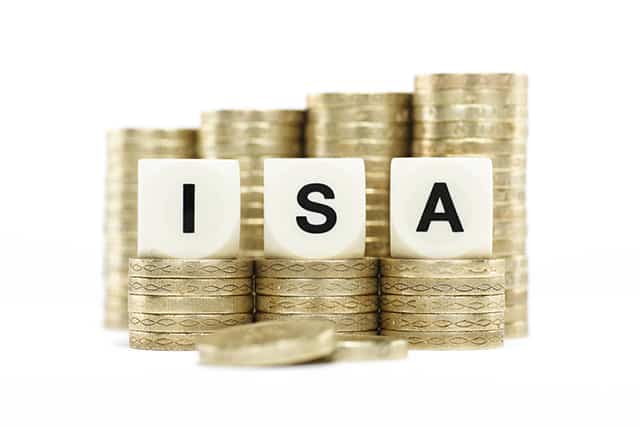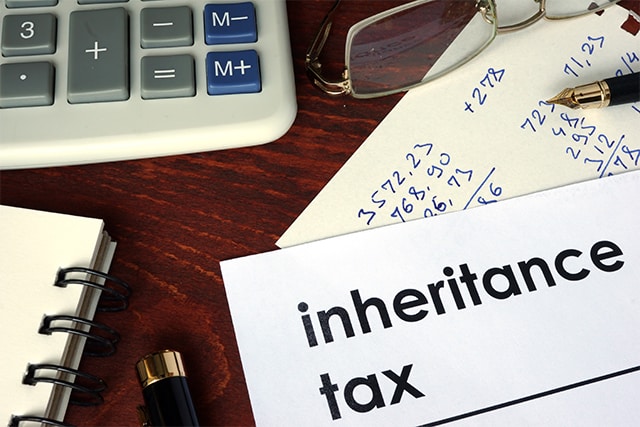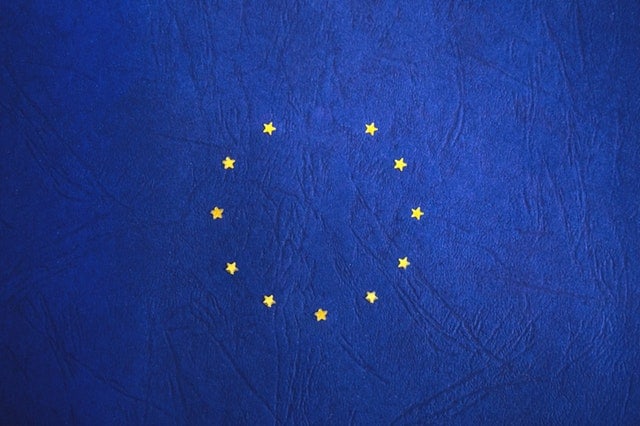By Ashley Preen
April 2, 2019
This new tax year ought to be an interesting one, as it looks likely that it will occur a few days after the UK crashes out of the EU at the end of March, which could have interesting economic effects just before everyone is heading off to do their personal tax returns.
Whether you’re doing tax returns for your business or you’re a self-employed person heading over to do your self assessment online with HMRC, you need to remain abreast of the latest developments in tax law and how these changes will affect you in the coming tax year.
As chartered accountants, it is our job to keep up to date with HMRC’s latest changes to the tax system, including things such as Making Tax Digital, which applies to UK business who fall into the VAT threshold. Nonetheless, we also work with many small companies and self-employed individuals, helping them to manage their personal money and stay in good keeping with HMRC.
If you’re confused about tax changes in the coming tax year, or if you’d just rather have someone else manage it all for you, then you can take advantage of our personal tax returns service after 5th April 2019. With this service, we’ll go through your earnings and see if there are any expenses you can claim to reduce your tax liability and save money. Then, we’ll fill out your self assessment online with HMRC on your behalf, so you can rest assured that it’s all been taken care of.
So, whether you decide to use our service or not, there are many changes to the tax system that you need to be aware of in this coming tax year. Below we have highlighted some of the main things that are going to be changing in the UK 2019/2020 tax year, and we’ve even included some of the key dates and deadlines that may be relevant to you and your tax bill.
Taxes and financial terminology can be confusing at the best of times, especially if you’re not a personal tax return accountant, so if you’re getting lost among all the jargon, HMRC have a helpful tax page which tells you all about the terminology and helps you to understand some of the more confusing aspects of your personal tax return. So, without further ado, let’s have a look at some of the main changes you can expect to find this tax year for 2019/2020.
If you’re a pretty high earner, you may have some changes to your personal allowance this year. For every £2 that your adjusted net income exceeds £100,000 this coming tax year, your personal allowance of £11,850 is reduced by £1. If you’re looking to help reduce your adjusted net income and thus keep your personal allowance higher, then you can contribute to your pension pot or gift aid.

Contributing to your pension pot of gift aid will not only help you to have a higher tax-free personal allowance, but it will also see you being taxed at an effective rate of 60%, saving money. This restriction is in place if your adjusted net income is between £100,000 and £123,700, so be sure to pay attention if you fall into that income bracket and you’re looking to maximise your allowance.
If you want to find another way to increase your allowance, you could agree to sacrifice some of your salary in order to receive a tax-free benefit in kind. For example, if you wanted to sacrifice the salary for things which are tax efficient, you could agree to contributions toward your pension, a bicycle, or employer-provided childcare if you have children.
If you’re looking for advice on how to increase your personal allowance when you fall into this bracket, feel free to speak to one of Pearl’s talented personal tax returns advisors after 5th April 2019 so you can start setting a plan in place which will increase your tax efficiency and help you to save money going forward.
For the vast majority of UK taxpayers, the most you can contribute to a government pension pot is £40,000 each tax year. This limit obviously varies according to your earnings, and it covers contributions by both the individual themselves and an employer’s contributions on behalf of their employee.

The handy thing about the £40,000 limit is that any part of it which is unused can be carried over for 3 years, but then it will be dismissed if unused after those 3 years. For example, over 3 years of a £40,000 limit, you have the option to put £120,000 into your pension fund in total. However, if you only put away £25,000 for the first 2 years, then by year 3, you have the option to add in £70,000 if you want to (because £50,000 plus £70,000 equals £120,000).
So, the unused pension allowance from 2015/2016 is going to lapse on 5th April 2019 if you haven’t used it. If you’re looking to top up your government pension and you’ve got some leeway in your allowance, you’d better get doing it quickly! If you need help figuring out your pension, the Money Advice Service has a handy pension calculator which can help you to work out your state pension threshold and desired earnings, making it easier for you to plan for the future.
Looking to put some money away in an ISA for a rainy day? Well, the maximum annual investment you can make in ISAs for the current tax year is £20,000. This means that if you want to make any investments within this limit, you need to do it by 5th April at the very latest. There are many benefits to an ISA which make them ideal for people who are saving for the future.

Furthermore, if you’re a parent or grandparent who’s
thinking about saving money for their children or grandchildren when they grow
up, you could set up a Junior ISA in their name. As of the current 2018/2019
tax year, you are able to invest a maximum of £4,260 into a Junior ISA account
for children who are 18 years old or younger.
So, if you want to maximise the savings
that your children/grandchildren can enjoy when they’re older, you need to
invest in the account before 6th April 2019 when the threshold
resets. If you need any additional guidance with ISAs, our business
and tax advisors will be able to lend you a helping hand.

If you’re looking for sensible ways to invest your money as the new tax year approaches, you may want to consider the Enterprise Investment Scheme (EIS) to help raise money for your company. The investments made through these schemes to companies who qualify will allow you to set off 30% of the amount invested against your tax bill for income tax. You can also use this process to defer CGT (Capital Gains Tax) until the company shares get sold.
EIS is designed to help smaller businesses grow by offering tax relief to investors who want to invest their money. Businesses can raise up to £5 million each year with EIS, and in the lifetime of their company, they can raise a maximum of £12 million, including any funds gathered from other venture capital schemes. However, if you’re investing in the EIS, be sure to invest in a reputable company, as you may not qualify for the tax breaks if the company breaks these rules.
These investments tend to be considered as risky, despite their useful 30% income tax breaks. As such, we would advise speaking to a professional consultant before investing in a growing company – we all know how unpredictable the stock market can be at the best of times. If you need the advice of a qualified chartered accountant who has a lot of experience with businesses from various sectors, you may wish to speak to one of our business and tax advisors.
In case you forgot about it, you have a tax exemption of £11,700 for the current tax year for capital gains investments. So, if you have a share where the gain will be less than £11,700 if you sell it before April 6th 2019, it would be wise to do so and take advantage of tax-free capital gains. Furthermore, if you have any shares which are considered worthless, you may wish to carry out a negligible value claim in order to establish a capital loss.
Establishing a capital loss against your income can actually help you to avoid income tax on up to 45% of the capital loss. In this strange sense, a capital loss could save you money on your tax bill! Pearl’s personal tax returns advisors will be able to help you with this if you need to declare any capital gains or losses before the deadline of the new tax year. We will be able to help you plan the best course of action in order to realise the lowest tax bill and the most efficient strategy for tax moving forward.
All UK individuals have a £3,000 annual allowance for inheritance. This means that any gifts worth £3,000 or less are exempt from IHT, which is good news for any heirs and heiresses out there. Additionally, if you have not used your £3,000 allowance form the 2017/2018 tax year, then this allowance will have rolled over onto the current 2018/2019 tax year. Basically, this means that you can make/receive gifts of up to £6,000 without being taxed before 6th April 2019.

If you’re looking to slowly dish out your estate to your heirs and heiresses in such a way that they aren’t landed with a huge IHT tax bill, you might want to make regular gift contributions out of your income to these heirs and heiresses. If you make gifts like this from your surplus income, they are not taxed if they are structured and documented in the proper fashion. Feel free to speak to Pearl Accountants for help with your personal tax return and reducing the amount that your heirs and heiresses will be taxed on their inheritance.

Both employers and employees will be required to pay more into their workplace pension as of the new tax year on April 6th. However, you can opt out of this process, which may or may not be a good idea for you depending on your age, financial situation, and circumstances. As of the new 2019/2020 tax year, the new limits will be 5% from the worker and 3% from the employer. As a result, the total minimum contribution will increase to 8% overall instead of the current 5% overall.
Some schemes are set up so that the employer pays more than the legal minimum, meaning that you have less money come out of your wages. Still, even if your employer is paying above the 3% minimum, you still have to make it up to the total of 8%, so chances are that you won’t escape workplace pension contributions. If you’d like to know more about your workplace pension contributions, you may want to browse the DWP’s workplace pensions site for answers to your questions.
If you’re looking at your capital allowances in your business, you should be looking at the business year end (not the 5th April) as a reference for the deadline. However, if you are operating a business and making your accounts up to 31st March or 5th April, you might want to consider buying equipment and machinery for your business so that you can harness all the benefits of the temporary increase to the Annual Investment Allowance (AIA).

As of 1st January 2019, the allowance increased from £200,000 to £1,000,000, which is quite a huge jump! However, this means that if your business year ends on 31st March, then you will be eligible for an AIA of £400,000, not the full million. This is because it is worked out proportionally, so in this case, it would be £200,000 x 9/12 and then £1 million x 3/12. This represents the number of months that the 2 allowance limits were in effect.
So in this example, £200,000 x 9/12 = £150,000, while £1 million x 3/12 = £250,000. This gives you a total allowance of £400,000. The government has a handy web page which can help you to work out the allowances for your company according to this business year end, and our business accountants can also be of help if things go awry and you need professional guidance.
The AIA gives you a 100% tax write off for any machinery or equipment which is purchased for your business, so it’s worth taking advantage of. Luckily, this tax relief extends to numerous fixtures and fittings in your premises, including heating systems, water systems, and electrical systems. So, if you’ve been thinking about decking out your workplace with fancy new equipment or it needs some plumbing doing, there’s no time like the present to take advantage of that tax-free allowance!

With the threat of a “no deal” Brexit looming over the heads of anyone filling out their personal tax return or trying to run a business, it’s natural that you’ll want to take any precautions you can to prepare for a “no deal” Brexit scenario. You’ll be pleased to know that the government has arranged precautions for the movement of goods to and from the EU.
HMRC has set up a simplified import and export system in the event of a “no deal” Brexit, making sure that goods can move in and out of the UK without businesses being forced to undergo increased documentation and lose money due to increased labour hours.
By using roll on roll off (RO-RO) facilities, this can make it easier for UK businesses to continue importing things from the EU. If your goods arrive via a RO-RO port of entry such as Dover or the Channel Tunnel, then this is good news for you amidst all the Brexit-borne uncertainty. If you want your business to take part in this HMRC provision, you need to apply to use Transitional Simplified Procedures (TSP).
Even if you’re in the know about the latest tax developments, it can be difficult to understand how they all interconnect and affect one another, making it hard to fill out your personal tax return on your own without feeling confused and unsure about certain parts of it. If you’re looking to get help with your personal tax return this coming tax year, Pearl Accountants’ professional personal tax returns service could be of great use to you going forward.
As Brexit looms and the pound looks like it’s sure to drop, it’s never been more important to stay on top of your tax liability and finances. It’s not unlikely that HMRC will try to extract more tax from businesses and individuals following a “no deal” Brexit, so make sure that you take all the necessary precautions to safeguard your money and minimise your tax liability going forward.